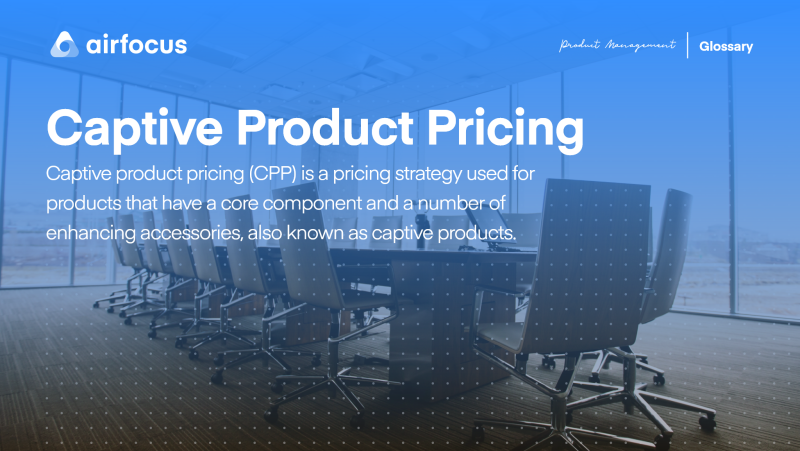Captive Product Pricing
What is captive product pricing?
Definition of captive product pricing
Captive product pricing (CPP) is a pricing strategy used for products that have a core component and a number of enhancing accessories, also known as captive products.
The captive product pricing strategy is developed in two steps, taking into account both the core product and the captive product(s), too.
On the one hand, the core product — considered the essential item — is priced more affordably to attract more buyers. On the other hand, the captive products are given higher price rates to make up for the low prices of the main item.
Since the core product serves little to no function without these accessories, customers who were initially convinced by the main item’s affordable price, find themselves having to purchase more and more expensive captive products to use it.
Captive product examples
Physical products with accessories or consumables are the most varied examples of CPP in action: game consoles and joysticks, printers and ink cartridges, coffee machines and pods, phones and subscription plans, or razors and razor blades.
However, captive products are not limited to physical goods.
Software sales can also follow a CPP strategy. For example, any software service with a basic free subscription plan and several other paid subscription options that offer extra features and/or functionalities.
What you need to consider when using CPP
For a CPP strategy to be successful, businesses need to account for the needs and spending power of their customers.
Mainly, companies need to balance their price points and refrain from setting rates that are unaffordable for users; setting a captive product’s price too high can affect the sale of the core product itself.

General FAQ

Glossary categories
Experience the new way of doing product management

Experience the new way of doing product management







